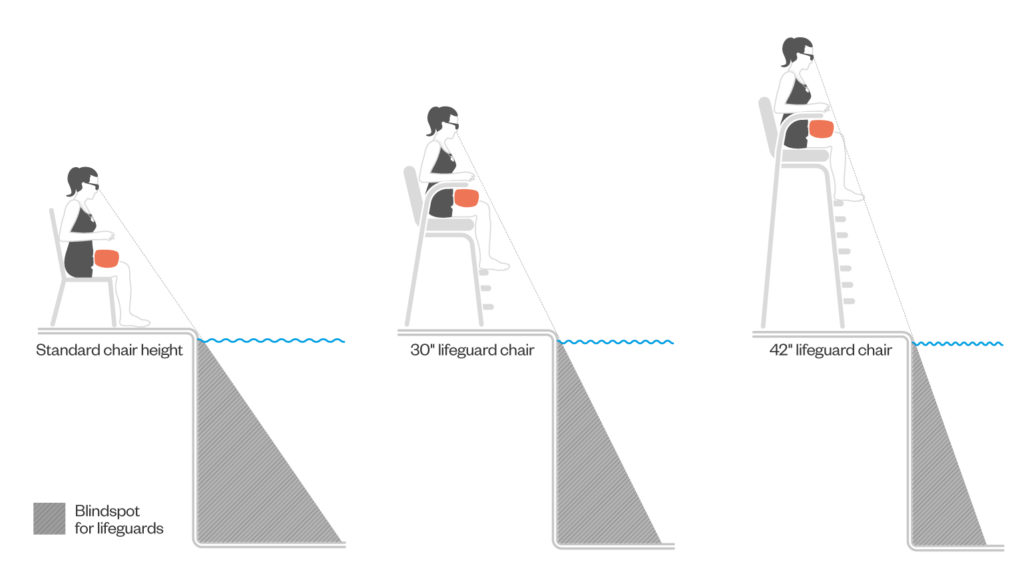Lifeguard Positioning: Optimizing Visibility
Categories:

It is much more difficult for a lifeguard to protect the people in their pool if they aren’t positioned properly to be able to view their whole area of responsibility. As we shared in the 2017 Aquatics Trends Review video, 89% of our 19 drowning investigations involved guards who were improperly positioned.
Here are some things to keep in mind when setting your lifeguards up for success this summer:
Elevated Chairs Improve Visibility
According to aquatics consultant Michael Oostman—who led our 19 investigations and determined the trends—there is a growing recognition in the aquatics industry that an elevated, properly positioned lifeguard chair is and always has been one of the most effective ways to ensure proper positioning. As illustrated in the graphic above, every inch of elevation reduces the size of blind spots considerably.
Strategic Patrolling
While there is still a case to be made for patrolling the deck, this should be done systematically—with guards moving from one designated position to another at regular intervals—and actively investigating the entire area of responsibility, from bottom to surface and all areas of the zone. It’s highly recommended that aquatics teams use in-service training as an opportunity to test visibility from likely positions they will be guarding from.
Alternatives for Deck-Level Chairs
Lifeguard chairs are there to ensure a proper vantage point that increases visibility. Deck-level chairs do not offer this advantage, and can increase the likelihood of a guard losing concentration. If elevated chairs are not available, on-duty guards will need to be standing or patrolling at all times—and shift changes will need to be timed to ensure adequate rest and avoid fatigue.
Proximity to the Water
Where a lifeguard is positioned in proximity to the water’s edge also greatly impacts their visibility. Lifeguards should always be positioned at the edge of the water, whether seated or standing. Every inch away from the edge greatly increases the size of blind spots and the lifeguard’s ability to see their entire area of responsibility.
We often see guards sitting far back from the edge of the water on benches set up for patrons, or in guard chairs that are pushed back to allow patrons to walk in front of them. Both of these scenarios typically place the guard too far back from the water’s edge and allow for breaks in visibility or distractions by people walking by.
